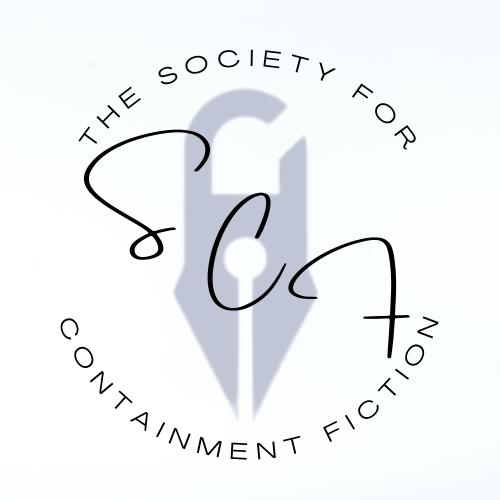The Worldbuilding of the SCP Foundation
- Confic Magazine
- Jun 1, 2022
- 7 min read
Culture & Community
by Stephen Escher

The SCP foundation is a massive online collaborative writing project centred around a secret organisation that tracks and contains supernatural entities, objects, and other phenomena which are collectively known as anomalies. As it is set in a horror-based science-fantasy universe, it showcases many examples of interesting worldbuilding. However, to maintain consistency between the countless number of SCP files and tales written by hundreds of different authors is a challenge. So in this post, I will discuss various techniques and tropes that the SCP Foundation uses to create a believable world.
I will link to every SCP I mention in this post. Please bear in mind that some of them are horror-based and may reference violence and gore.
Core concepts
Files and tales on the SCP wiki can cover a large variety of genres and themes, but they are linked together by some basic concepts:
Format
The main format of writing on the SCP wiki is the SCP file. This is an in-universe document starting with an object’s containment procedures and then followed by a description of the object itself. There may also be additional information in the addendum, which can include interview logs, experiment logs and exploration logs. The contents of an SCP file can widely vary, but the standard format provides a degree of consistency between them.
The SCP file may have a restrained format and style, but there is still a lot of room for creativity. SCP-2521 is a great example of this, as the special containment procedures require the file to be written purely in pictographs.
There also some alternative storytelling formats on the wiki: There are tales, which are more conventionally formatted stories; and then there are the various GoI formats (see the ‘Groups of Interest’ section).
Object Classes
Another important concept is the object class. There are three standard classes:
Safe – which can be contained passively
Euclid – which requires more active containment
Keter – which are extremely difficult to contain.
These refer to the difficulty of containment and not level of danger, illustrating the importance of containing anomalies to the foundation.
Additionally, there are two non-standard (but still quite common) classes:
Thaumiel – which are beneficial anomalies that can be used to contain other SCPs
Neutralised – which are SCPs that have been destroyed or have had their anomalous properties somehow removed
There are many other classes, however, most of these are extremely niche and only include a few SCPs.
Foundation Structure
The foundation has a large list of various titles and classifications for its personnel. Being a secret organisation, it has a range of security clearance levels that can be applied to an SCP file. There are also personnel class, which is based on who much danger that the foundation member is allowed to be exposed to. The most well-known of these classes is Class-D; which are usually prisoners used as expendable personnel, often used when the foundation wishes to experiment with a dangerous anomaly.
The foundation is lead by a mysterious group called the O5 council. There are thirteen members and are designated O5-1 to O5-13, and have access to security clearance level 5.
Amnestics
A common trope in the SCP universe is amnestics. These can be used to remove memories of those who have witnessed the anomalous or know too much about the foundation. This trope is used to justify how the foundation can keep information about anomalies away from the public. What’s interesting is the amount of depth, as there are many classes of amnestics that vary in strength and purpose.
Groups of Interest
The Groups of Interest (GoI) page is basically SCP wiki’s version of listing the ‘factions’ or houses of the world. However, there is a bit more nuance here. GoIs include a wide range of different kinds of groups from companies such as Dr. Wondertainment to religious cults like The Church of the Broken God.
A particularly interesting GoI is the Global Occult Coalition (GOC), which is a rival organisation to the SCP foundation dedicated to protecting the world from anomalies. Unlike the foundation, the GOC tends to have a more destructive approach. SCP-1609 illustrates the different approaches of the foundation and the GOC. SCP-1609 is the remains of a sentient chair which could teleport to the vicinity of any person in need of somewhere to sit. The GOC attempted to destroy SCP-1609 by using a wood-chipper, but SCP-1609 still retained its anomalous properties and killed several GOC members by teleporting a portion of its mass into their lungs. In this SCP file, the GOC is used as an example of why the foundation contains rather than destroys.
Another interesting feature of the GoIs is the GoI formats. These are an alternative to the SCP file, written in the perspective of a GoI. GoI formats add extra depth to the SCP multiverse and provide more options for writers. The nature of the GoI format depends on the group, for example: Are We Cool Yet? is a group of anomalous artists, so their GoI format is a project proposal for an art exhibition.
What is Canonical?
It is said the SCP wiki has no canon, which really means there is no official canon and what is considered canonical is up to the reader. As a result of this, many SCPs may contradict each other. There is an implied in-universe reason for these inconsistencies, which is that the SCP foundation intentionally creates fake SCP files amongst the true SCP files to conceal the truth. The best example of this would be the SCP-001 proposals:
SCP-001
First, let me make something clear to those unfamiliar with the history of the SCP wiki: SCP-001 was not the first SCP to be written. The first was actually SCP-173 “The Sculpture”, and was originally posted on 4chan in 2007. Its popularity sparked the creation of other SCPs and the SCP wiki. SCPs numbered 002 to 999 started to be filled out, but the community couldn’t agree on the nature of SCP-001. Being the first SCP in-universe, it had to be something amazing. The solution was to have a set of ‘proposals’, leaving it to the reader to decide which one is (or ‘ones are’) true and which ones are fake.
SCP-001 proposals can widely vary in theme. Some imply the origins of the foundation, such as Dr. Gears’ Proposal ‘The Prototype’ and Dr. Clef’s Proposal ‘The Guardian’. ‘The Prototype’ at first seems like an average monster-based SCP file. It’s interesting but doesn’t seem significant enough to be SCP-001. What is interesting is the way it is written, it breaks the typical SCP format and is in an awkward choppy style (a bit like my writing). At the end it implies that it is written by a precursor to the SCP foundation:
“Additional objects reported, Overseers considering conversion of ADRX-19 to a dedicated recovery and containment facility. Reports may need censorship for reasons of security.” from Dr. Gears’ Proposal for SCP-001
Some proposals serve more as an explanation for the existence of anomalies, examples of this include Jonathan Ball’s Proposal ‘Sheaf of Papers’, Dr. Mann’s Proposal ‘The Spiral Path’ and S Andrew Swann’s Proposal ‘The Database’. While others are epic tales such as S. D. Locke’s Proposal ‘When Day Breaks’ or The Ouroboros Cycle.
The canons
Despite the lack of cannon, there is a whole page listing the site’s ‘canons’. These are sets of SCP files and/or tales that are consistent with each other. This may be some kind of scenario, like the Broken Masquerade where the existence SCP foundation, the anomalous, and some Groups of Interest become public knowledge. Some may be an alternative setting, such as Aces and Eights which is a wild west setting.
Worlds Within a World
There are various individual SCPs which evoke vast interesting worlds by themselves. In this last section, I will list a few of my favourite SCPs that make good use of worldbuilding.
As previously mentioned, SCP-173 was the first SCP to be written. As it is the first one, it does a very good job of establishing a world. Rather than giving us a large info dump about the foundation or the existence of anomalies etc., it evokes a world by referring to ‘special containment procedures’ and ‘personnel’ and ‘protocol’.
SCP-5005 is a colony called ‘Lamplight’ located beyond the edge of the multiverse. This SCP uses technobabble and references to places and events from various other universes to evoke awe.
Another multiverse-based SCP is SCP-2700 ‘Teleforce’, which is a device created Nikola Tesla capable of causing an ‘inverted big bang’. The addendum is a personal log of Nikola Tesla, about him meeting a traveller from another universe. The multiverse depicted in this SCP is much more sparse than in SCP-5005:
“…in addition to his own and mine, they had only found five others that were coherent and could support life.” from SCP-2700
Of course, there are many other multiverse-based SCPs, my personal favourites being SCP-3008 ‘A Perfectly Normal, Regular Old IKEA’ and SCP-1472 ‘Multiverse Strip Club’. But I’m sure there are many other brilliant ones that I’m not aware of.
Finally, I will mention SCP-5000 ‘Why?’. Why? Because it’s a great SCP about the foundation deciding to attack humanity, utilising many other SCPs. It’s an interesting ‘what if’ scenario similar to ‘The Broken Masquerade’ cannon.
Conclusion
It is difficult to sum up the SCP multiverse. As it has a vast amount of SCP files and tales which cover a variety of themes, genres and tropes. Yet, these are all unified by the core concept of SCP which is a secret organisation that protects humanity from the knowledge and influence dangerous entities. The nature of an anomaly can vary widely, allowing authors and readers to create their own interpretation of the SCP universe. Additional formats such as tales and GoI formats allow authors to expand on ideas presented in the SCP files. Finally, the creative use of worldbuilding and cross-referencing in individual SCPs helps to evoke a vast and in-depth multiverse.
If you liked that blog post, then please consider supporting me on Ko-fi. Thank-you for reading.
This work is licensed under a Creative Commons Attribution-ShareAlike 3.0 Unported License.
© Stephen Escher
This article first appeared on Stephen Escher's worldbuilding blog, here: https://stephenescher.blog/2020/10/31/the-worldbuilding-of-the-scp-foundation/
Follow Stephen Escher on Twitter: https://twitter.com/StephenEscher








This is great SCP 101; textbook stuff!